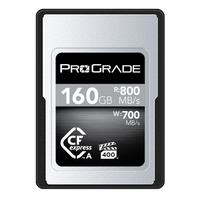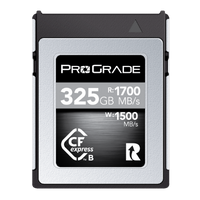If you are not a computer geek, then terms like PCIe or NVMe will make you scratch your head. Then again, if you would like to know what it all means and why it all matters, then you’ve come to the right place. In this article, we’re going to take a deeper dive – from a photography and cinematography perspective – into CFexpress memory cards that use the PCI Express interface and NVM Express protocol. This piece of writing won’t instantly turn you into an expert, but you sure can look like one if you start dropping the words into casual conversations with your fellow photo and videographers. So, reasonable caution is advised.
To be fair, this is one of these subjects that looks more complicated than it actually is. Let’s go over the terms first.
CFexpress is a new standard for removable memory cards created by the CompactFlash Association (CFA), mainly for the professional imaging and video devices.
PCIe stands for Peripheral Component Interconnect Express, and it’s an electrical bus. It is a digital connector with a distinct set of conductors capable of carrying data between different computer components. In this case, between your camera and a CFexpress memory card or a CFexpress memory card and your computer.
NVMe stands for Non-Volatile Memory Express, and it’s a data storage protocol. While volatile memory needs constant power for retaining data, then non-volatile memory does not. It‘s a type of memory that can preserve the stored information even after power is removed. In order for your camera or computer to access this memory, a specific protocol is needed. A language if you will. That’s pretty much exactly what NVMe is.
In other words, if PCIe is an interface, a physical connection between digital devices, then NVMe is a specification for that interface, used for accessing and transferring data to or from a CFexpress memory card’s non-volatile memory.
If previous standards, SATA protocol, among others, had a command translation layer, then NVMe protocol removed that. Picture yourself talking to a foreigner. Both of you may be very smart, but if you don’t speak the same language, it takes a lot of explaining and gesturing and translating and whatnot to transfer data from your brain to his. Quite the opposite is true when you try to get your ideas across to someone you know very well and who speaks your language. You’ll understand each other in mid-sentence and are practically capable of reading each other’s minds without using any words at all. It’s pretty much the same with digital communication using the NVMe protocol.
What makes a PCIe connection special, however, is its architecture. With one to four serially connected data-transmission lanes, each capable of transferring 1GB of data per second, PCIe outperforms other bus technologies big time. For example, SATA 3.0 tops around 0.6GB/s and UHS-II at 0.3GB/s. Besides, each PCIe lane is made of two differential signaling pairs: one for receiving and the other for transmitting data. Therefore, each PCIe lane is capable of moving data simultaneously in both directions.
Add to that high bandwidth, low latency, and support for a large number of multiple queues provided by NVMe, and you get an ideal combination of interface and protocol for CFexpress memory cards.
Did you know that ProGrade Digital was the first to use that ideal combination in higher capacity CFexpress cards? In 2018, we were the first to develop a 1TB CFexpress Type B card that we then introduced at the NAB show in Vegas. The all-mighty titan of a card was well received, and it remains in our lineup to this day.
All ProGrade Digital’s CFexpress Type A and B cards fully utilize the intelligent combination of the PCIe interface and NVMe protocol and are therefore capable of sustaining a write speed of 700MB/s and a read rate of 800MB/s for CFexpress Type A cards with a smaller form factor and write speed of 1.4GB/s and read rate of 1.7GB/s for CFexpress Type B cards with a bigger form factor. Meanwhile, cards using SATA connections and protocols have read/write speeds below 0.3 and 0.6 GB/s.
The potential to carry data up to 6 times faster than its predecessors and the ability to handle raw video formats with ease are not the only advantages CFexpress cards have for photo and videographers. They are also much more energy-efficient and safe.
The differential interface of PCIe (the different signaling pairs for sending and receiving data) makes the incoming signal more resistant to electromagnetic interference (EMI) and, at the same time, reduces the EMI of the outgoing signal. That serves to defend transferred signals from possible EMI disturbances and helps to protect your stored data. So, whatever you snap, shoot, or store on that card will make it from a set to your computer.
Click here to learn more about ProGrade Digital CFexpress cards and see which ones are perfect for you.
ProGrade Digital CFexpress cards are also available at bhphoto.com, adorama.com, and most Amazon markets around the world!





